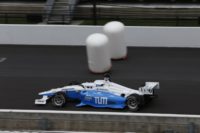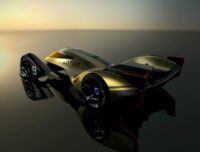INDIANAPOLIS—The car that will compete in the world’s first head-to-head high-speed autonomous auto race was unveiled here recently. Teams comprised of college students will program the cars to compete this fall at the Indianapolis Motor Speedway, the home of the world-famous Indy 500.
The Indy Autonomous Challenge (IAC) on Oct. 23 will be the world’s first head-to-head, high-speed autonomous race. It will feature a $1.5 million prize purse from sponsors such as Ansys, Aptiv, Bridgestone, Microsoft and Schaeffler. The sleek open-wheel vehicles that will compete in the event are being built by Dallara Automobilli at its factory in Varano de Melegari, Italy.
“[This] race car is the most advanced, fastest autonomous vehicle ever developed,” claims Paul Mitchell, president and CEO of Energy Systems Network, co-organizer of the IAC. “Our sponsors are providing radar, lidar, optical cameras and advanced computers, bringing the value of each vehicle to $1 million.
“The primary goal of the IAC is to advance technologies that can speed the commercialization of fully autonomous vehicles and advanced driver-assistance systems, leading to increased safety and performance,” explains Mitchell. “In addition, the IAC is a challenging competition to excite the best and brightest university students from around the world to engage in hands-on engineering firsts.”
More than 500 undergraduate and graduate students who specialize in artificial intelligence software have responded to the challenge, representing 39 universities in 11 countries on four continents and 14 U.S. states. Inspiration for the IAC was the DARPA Grand Challenge.
”The modified Dallara IL-15 is retrofitted with hardware and controls to enable automation to enhance safety, control and performance,” says Stefano dePonti, CEO and general manager of Dallara USA. “Components include rugged-edge onboard computing, vehicle-to-vehicle communications, perception systems, high-end graphics processing units, drive-by-wire, artificial intelligence and powerful central processing units to run IAC teams’ software and algorithms.
“One of the challenges for autonomous racing is solving edge case scenarios—challenges that occur only at extreme operating parameters, such as avoiding unanticipated obstacles at high speeds,” explains dePonti. “We know how the world’s best race car drivers react in the Dallara in high-speed scenarios, but now we have to anticipate the actions of a robot.”






